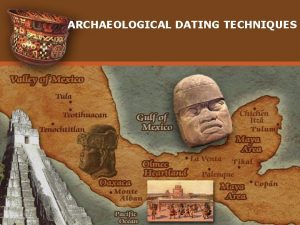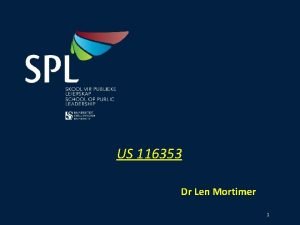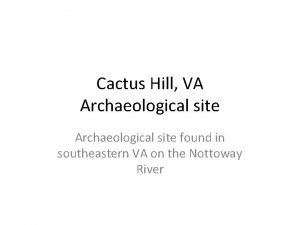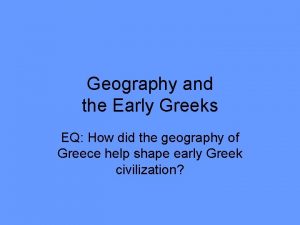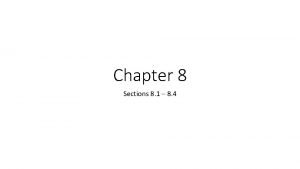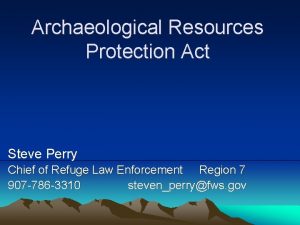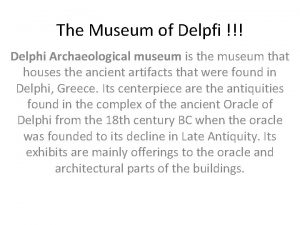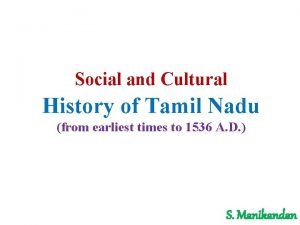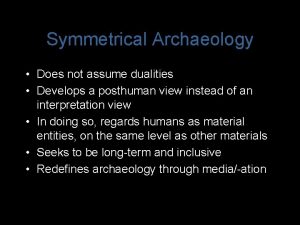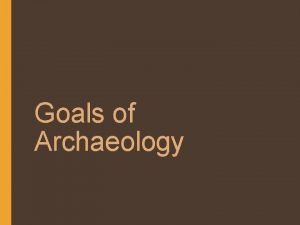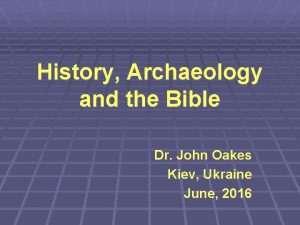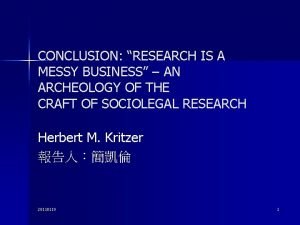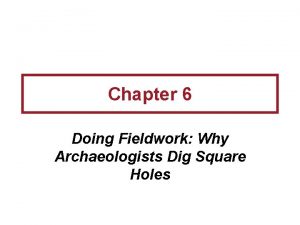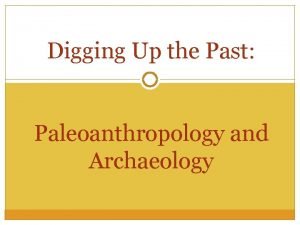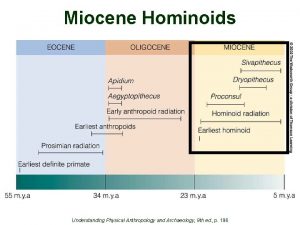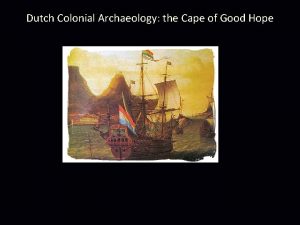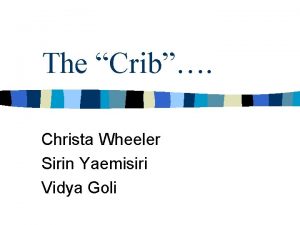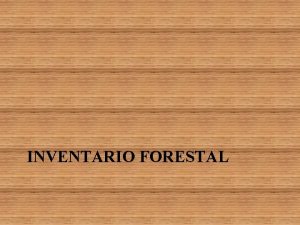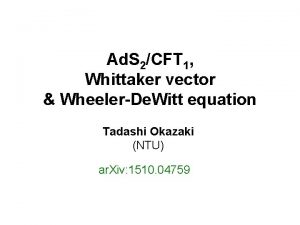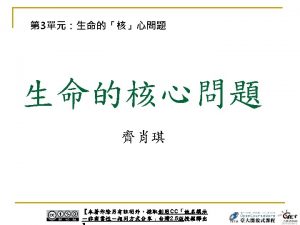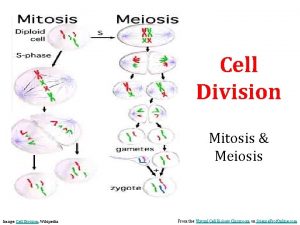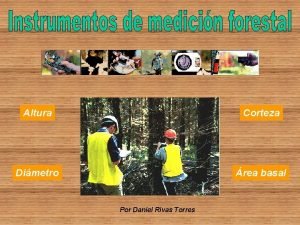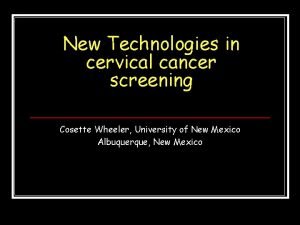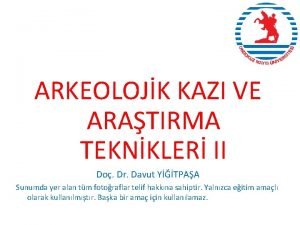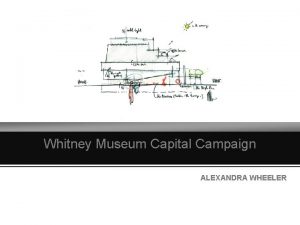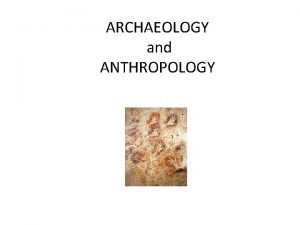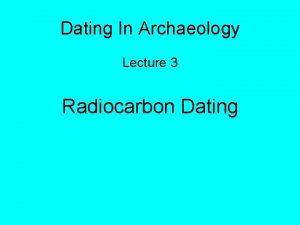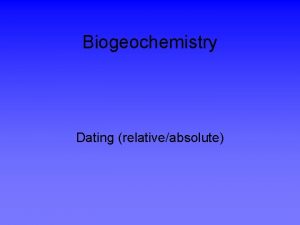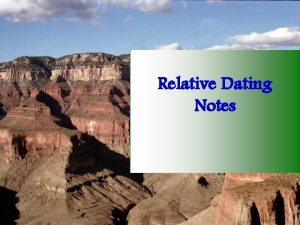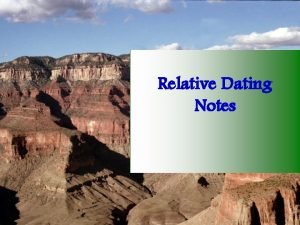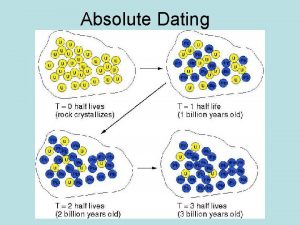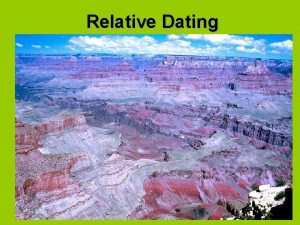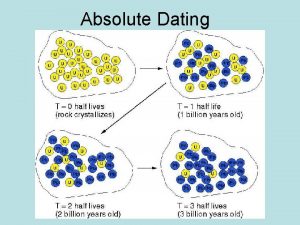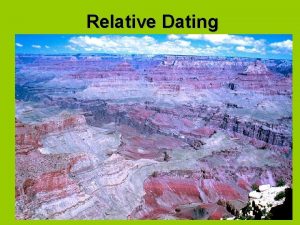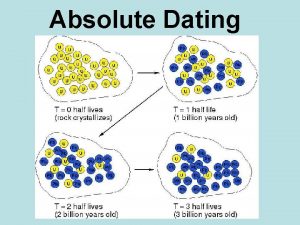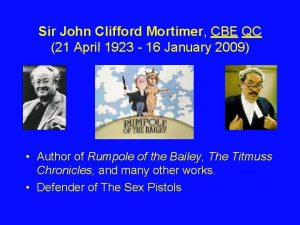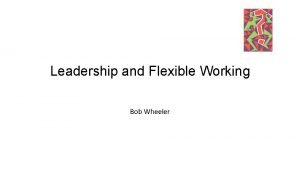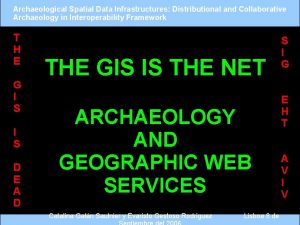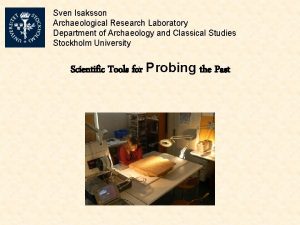ARCHAEOLOGICAL DATING TECHNIQUES SIR MORTIMER WHEELER new archaeology



































- Slides: 35

ARCHAEOLOGICAL DATING TECHNIQUES

SIR MORTIMER WHEELER “new archaeology” excavated urban centres layer by layer u “The important thing is that the archaeologist must know his dates and how to use them; recorded dates where they are valid and unwritten dates where geological or physical or chemical or botanical science can win them from the earth. ”

RELATIVE /ABSOLUTE u u u RELATIVE TECHNIQUES Stratigraphy and Seriation Typology and Cross Dating Fluorine Obsidian Hydration Pollen Analyses ABSOLUTE TECHNIQUES Radio Carbon Dating Potassium Argon Dating Thermoluminescence Electron Spin Resonance Dendrochronology

RELATIVE DATING TECHNIQUES u u One of the most fundamental principles of archaeology is the Law of Superposition. The law states that strata that are younger will be deposited on top of strata that are older, given normal conditions of deposition. This law is the guiding principle of stratigraphy, or the study of geological or soil layers. Stratigraphy is still the single best method that archaeologists have for determining the relative ages of archaeological materials.

RELATIVE DATING u u Relative dating is an invaluable tool, but does not tell us WHEN an event occurred, just the ORDER in which events occurred. The oldest technique for establishing the actual ages of deposits is to use artifacts of a known age. These can be coins with minting dates stamped on them, writings with dates included, or objects that we know were only manufactured during a certain time.

SUPERPOSITION

STRATIGRAPHY Stratigraphy is the study of strata, or layers. u Specifically, stratigraphy refers to the application of the Law of Superposition to soil and geological strata containing archaeological materials in order to determine the relative ages of layers. u In addition, stratigraphy can tell us much about the processes affecting the deposition of soils, and the condition of sites and artifacts u

THE LAYERS OF TROY

SERIATION u This technique places assemblages of artefacts into relative order. Petrie used sequence dating to work back from the earliest historical phases of Egypt into predynastic Neolithic times, using groups of contemporary artefacts deposited together at a single time in graves. Seriation was developed in the USA to place in order finds from strata or other kinds of assemblages such as potsherds collected from the surface of sites.

Petrie’s system of Seriation or Sequence Dating was developed in 1899. The system emphasises the relation of one find to another rather than an exact date of manufacture. Nine hundred graves were selected from almost 4000 excavated

CROSS DATING u u Cross-dating is a technique used to take advantage of consistencies in stratigraphy between parts of a site or different sites, and objects or strata with a known relative chronology. A specialized form of cross-dating, using animal and plant fossils, is known as biostratigraphy.

FLUORINE DATING u u u Fluorine is an element that is found in most ground water around the world. It can be used as a relative dating technique. Skeletal remains buried in the earth are subject to a wide range of chemical changes. One of these changes can occur when percolating ground water comes into contact with the remains. The ground water inundates the bone remains with a solution of minerals drawn from local soils. This can cause a change in the mineral composition of the bone. Hydroxyl ions are displaced with a form of soluble fluorides. These ions form fluorapatite which is markedly less soluble. Over time, more and more fluorides are accumulated. The rate varies depending on the specific condition in the soil of the area and increases with age. Fluorine dating is chiefly of value in determining whether bone implements or human skeletal remains found in association with other bones were buried at the same time. It was fluorine dating that was instrumental in the debunking of Piltdown Man.

Potassium Argon Dating u u u The Potassium-Argon (K-Ar) dating method is the measurement of the accumulation of argon in a mineral. In contrast to a dating method such as C 14 dating which measures the disappearance of a substance, K-Ar dating measure the accumulation of argon in a substance from the decomposition of potassium. This is relatively easy because argon, being an inert gas, usually does not leech out of a mineral and is easy to measure in small samples. The actual date is comprised of the time it has been formed from molten/heated minerals. This method, therefore, is not very useful when dating the time a human bone has been in the ground, but it does help in giving the time of many of the artifacts that are often times found alongside burials. If you were to take a piece of everyday rock, the K-Ar method would give you the date that piece of rock was "reset" by the changing of it's chemical structure. Many things can and do change the structure of rocks. Heating, weathering and many kinds of alterations will reset this time. Therefore, archaeologists can determine relatively accurately how long ago a heat treated projectile point was made, or a piece of pottery was last used to cook food.

POTASSIUM ARGON DATING u u u Potassium-Argon Dating Potassium-Argon dating is the only viable technique for dating very old archaeological materials. Geologists have used this method to date rocks as much as 4 billion years old. It is based on the fact that some of the radioactive isotope of Potassium, Potassium-40 (K-40) , decays to the gas Argon-40 (Ar-40). By comparing the proportion of K-40 to Ar-40 in a sample of volcanic rock, and knowing the decay rate of K -40, the date that the rock formed can be determined.

POLLEN DATING PALYNOLOGY u Each year seed-bearing plants release large numbers of pollen grains. This process results in a "rain" of pollen that falls over many types of environments. Pollen that ends up in lake beds or peat bogs is the most likely to be preserved, but pollen may also become fossilized in arid conditions if the soil is acidic or cool. Scientists can develop a pollen chronology, or calendar, by noting which species of pollen were deposited earlier in time, that is, residue in deeper sediment or rock layers, than others

Value of Pollen Dating pollen dating provides relative dates beyond the limits of radiocarbon (40, 000 years), and can be used in some places where radiocarbon dates are unobtainable. u Pollen dating was crucial in the dating of Ice Man and the Shroud of Turin u

Weakness of Relative Dating u u u The potential flaws in relative dating are obvious. Simply assuming that an object is older because it was found at a lower depth in the record is only subjective science. There are many instances of deep holes being dug for rubbish pits or to locate well water that protrude into the record of older strata injecting more modern material as they are filled in over time. Landslides and slips can completely change the topography of an entire site burying what was once on top by that which is much older, hence reversing the strata layers


ABSOLUTE DATING A more precise and accurate system is known as absolute dating and can in most circumstances provide a calendar year to the object. Since 1950 there has been a transformation in the dating techniques of archaeologists. u Absolute dating is highly dependant on laboratory analysis. There a number of techniques that have come to archaeology through the nuclear research efforts during WW 2. u

A Watershed u u 'The application of the 14 C method to archaeological materials is generally considered to be a watershed event in the history of archaeology and, in particular, in prehistoric studies “ R E Taylor

RADIO CARBON DATING u u u Radiocarbon dating uses the biological assumption that all living things absorb carbon, both ordinary carbon, C 12, and radioactive carbon, C 14, into their living tissue. At the moment of death the C 14 begins to decay at a rate that scientists already know from other experiments. The missing amount can then determine how long it took to be lost and therefore date the object to a precise period. C 14 dating can only be used on organic matter.

LIMITATIONS OF C 14 DATING u First, the size of the archaeological sample is important. Larger samples are better, because purification and distillation remove some matter. Although new techniques for working with very small samples have been developed, like accelerator dating, these are very expensive and still somewhat experimental. u Second, great care must be taken in collecting and packing samples to avoid contamination by more recent carbon. For each sample, clean trowels should be used, to avoid cross contamination between samples. . u Third, because the decay rate is logarithmic, radiocarbon dating has significant upper and lower limits. It is not very accurate for fairly recent deposits

AMS radiocarbon dating is a form of radiocarbon dating that is more precise and requires less carbon than conventional radiocarbon methods

DENDROCHRONOLOGY u u Dendrochronology is another traditional technique for establishing the abolute date of events. This is also called Tree-Ring Dating. Tree-Ring dating is based on the principle that the growth rings on certain species of trees reflect variations in seasonal and annual rainfall. Trees from the same species, growing in the same area or environment will be exposed to the same conditions, and hence their growth rings will match at the point where their lifecycles overlap.


Weaknesses in Dendrochronolgy u In some areas of the world, particularly in the tropics, the species available do not have sufficiently distinct seasonal patterns that they can be used. u Where the right species are available, the wood must be well enough preserved that the rings are readable. In addition, there must be at least 30 intact rings on any one sample. u There also must be an existing master strip for that area and species. There is an absolute limit on how far back in the past we can date things with tree rings. Although bristle cone pine trees can live to 9, 000 years, this is a very rare phenomenon. As we try to push our matching of archaeological specimens beyond the range for which we have good control data, our confidence in the derived dates diminishes

LIMITATIONS u u Fourth, the ratio of C-14 to C-12 in the atmosphere is not constant. Although it was originally thought that there has always been about the same ratio, radiocarbon samples taken and cross dated using other techniques like dendrochronology have shown that the ratio of C-14 to C-12 has varied significantly during the history of the Earth. Finally, although radiocarbon dating is the most common and widely used chronometric technique in archaeology today, it is not infallable. In general, single dates should not be trusted. Whenever possible multiple samples should be collected and dated from associated strata

Obsidian Hydration u u Developed in 1960, Obsidian Hydration Analysis (OHA) is an inexpensive technique archaeologists and geoarchaeologists use to find the age of a site they have excavated. This method is most often used as a means of relative dating , but an absolute date may also be estimated in some circumstances Obsidian was a common rock used in stone tool making. Obsidian is used mainly because of its availability in prehistoric tool making and its unique quality of rehydrating itself after a fracture When obsidian is newly exposed to the atmosphere, its surface begins to absorb water from the air, which gradually seeps into the interior of the stone. Several factors can affect the obsidian's water absorption, including soil type, climate, time and geochemistry. When viewed under a microscope, the layer permeated by moisture (known as a "rind") becomes visible as a rim when the rind reaches a width of 0. 5 microns (a micron being one millionth of a meter). The greater the rind thickness, the greater the age of the exposed obsidian.

The actual measurement of hydration involves using light transmission to determine the amount of hydration, and therefore the relative age of the sample. The prepared slides are observed by means of a microscope to determine the amount of light transmission.

Electron Spin Resonance u u u Electron Spin Resonance Dating falls into the group of dating methods that uses radiation exposure to date many materials found at archaeological sites. It is also known as a Radiometric Dating Method. This technique is mostly used to date minerals. It has been used to date such things as sedimentary quartz, fossilized teeth, flint, and calcium carbonate in limestone, coral and egg shells. This method works by using radiation to cause electrons to separate from the atoms. These electrons then become trapped in the crystal lattice of minerals. This changes the magnetic field of the material at a rate that is predictable, allowing it to be used to date an item. It can be used to date when mineralization, sedimentation, or the last heating of minerals took place. It is often used to date quartz from meteorite strikes, and places where earthquake activity has taken place

THERMOLUMINESCENCE u u u Artefacts that are made from crystalline materials can be dated using luminescence analysis. Crystalline minerals when subjected to intense heat will burn with differing colours of flame. Mostly used to date pottery the method is very effective but costly. The greatest problem with dating an object from antiquity is that nearly every absolute dating process requires the destruction of at least a piece of the object in conducting the analysis. There are relatively few dating laboratories and having an artefact dated can be an expensive exercise especially if the artefact is not of great value itself.

Limitations to Thermoluminescence u u u Thermoluminescence dating is in its developmental stages. Except for doing simple authenticity tests of art objects, thermoluminescence dating is not generally accurate enough for archaeological standards. There are many factors which have to be taken into account and each of these factors has its own random error. This, combined with poorly understood measurement errors, make the accuracy of thermoluminescence dating only about 15% accurate for a single sample and 7 to 10% accurate for a suite of samples in a single context. Thermoluminescence dating is used for rocks, minerals and pottery. It dates items between the years 300 -10, 000 B. P.

Uranium Disequilibrium u u Uranium-Thorium dating is an absolute dating technique which uses the properties of the radioactive half-life of Uranium-238 and Thorium-230. Uranium-Thorium dating was first used on fossil bones in 1956, however, it had been used for dating wood before this. This dating technique has been used effectively on marine sediment, bone, wood, coral, stone and soil. One of the benefits of uranium-thorium dating is that the sample sizes can be less than 20 grams, in fact bone samples can be 3 -5 grams for an accurate date


GETTING THE ANSWER RIGHT?
 Mortimer wheeler soil layer method
Mortimer wheeler soil layer method Dating serves several important functions that include:
Dating serves several important functions that include: Frances mortimer
Frances mortimer Len mortimer
Len mortimer Peter mortimer munich
Peter mortimer munich Jeffrey mortimer
Jeffrey mortimer Cactus hill artifacts
Cactus hill artifacts Archaeological site of mycenae
Archaeological site of mycenae An archaeological dig turns up large numbers
An archaeological dig turns up large numbers Archaeological resources protection act
Archaeological resources protection act Delpfi
Delpfi Gulf of mannar
Gulf of mannar Symmetrical archaeology
Symmetrical archaeology Goals of archaeology
Goals of archaeology Dr john oakes
Dr john oakes Archaeology is a messy business
Archaeology is a messy business Arbitrary vs natural levels archaeology
Arbitrary vs natural levels archaeology Archaeology
Archaeology Turkanopithecus
Turkanopithecus Archaeology
Archaeology Conception of curriculum
Conception of curriculum Christa wheeler
Christa wheeler Pentaprisma de wheeler
Pentaprisma de wheeler Bob wheeler tool time
Bob wheeler tool time Colonel john wheeler middle school
Colonel john wheeler middle school Wheeler de witt
Wheeler de witt Jean wheeler
Jean wheeler Richard wheeler
Richard wheeler Brenna wheeler
Brenna wheeler Chromosome
Chromosome Sonda de corteza
Sonda de corteza Richard wheeler
Richard wheeler Chromosome
Chromosome Cosette wheeler
Cosette wheeler Wheeler kutu plankaresi
Wheeler kutu plankaresi Alexandra wheeler
Alexandra wheeler
